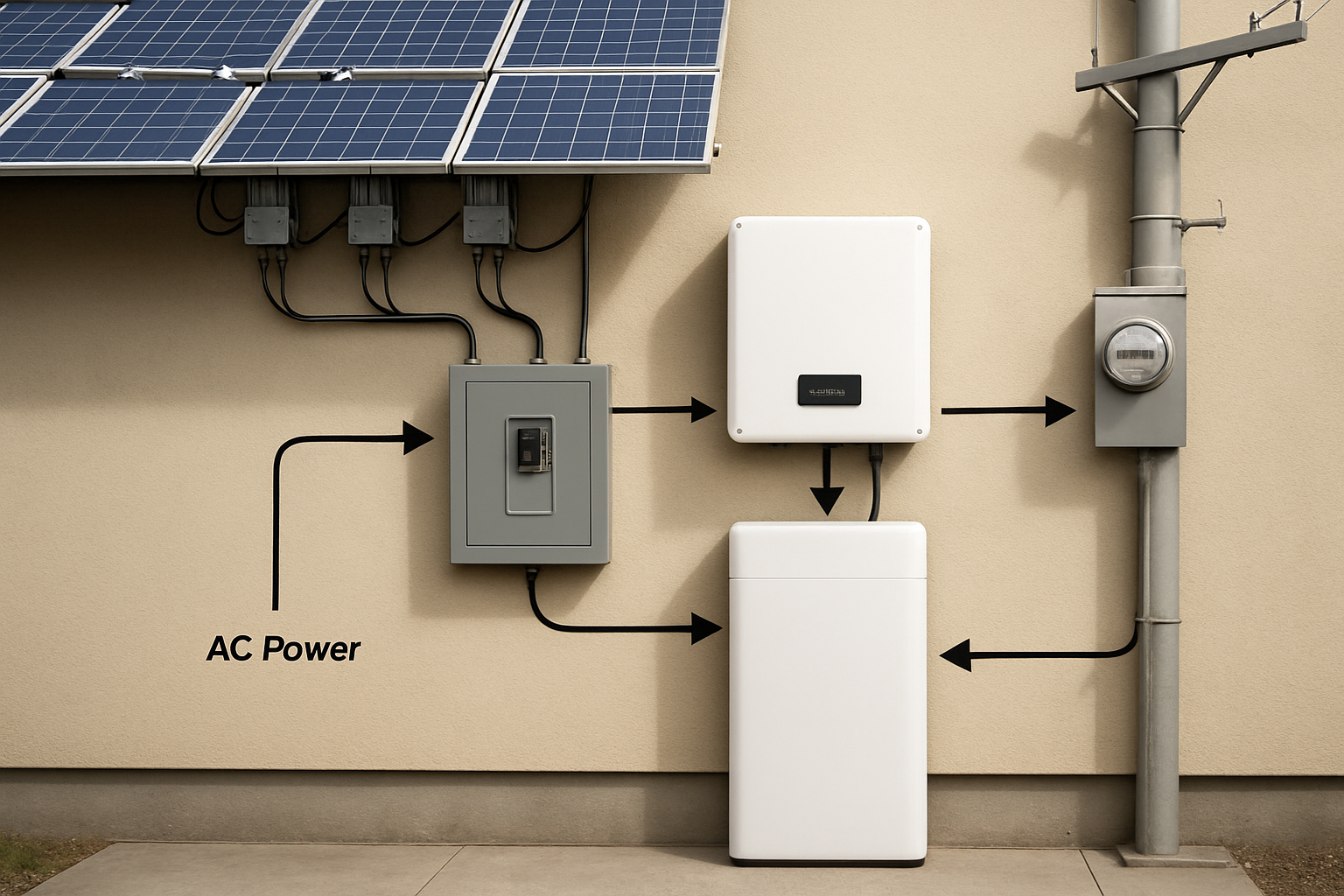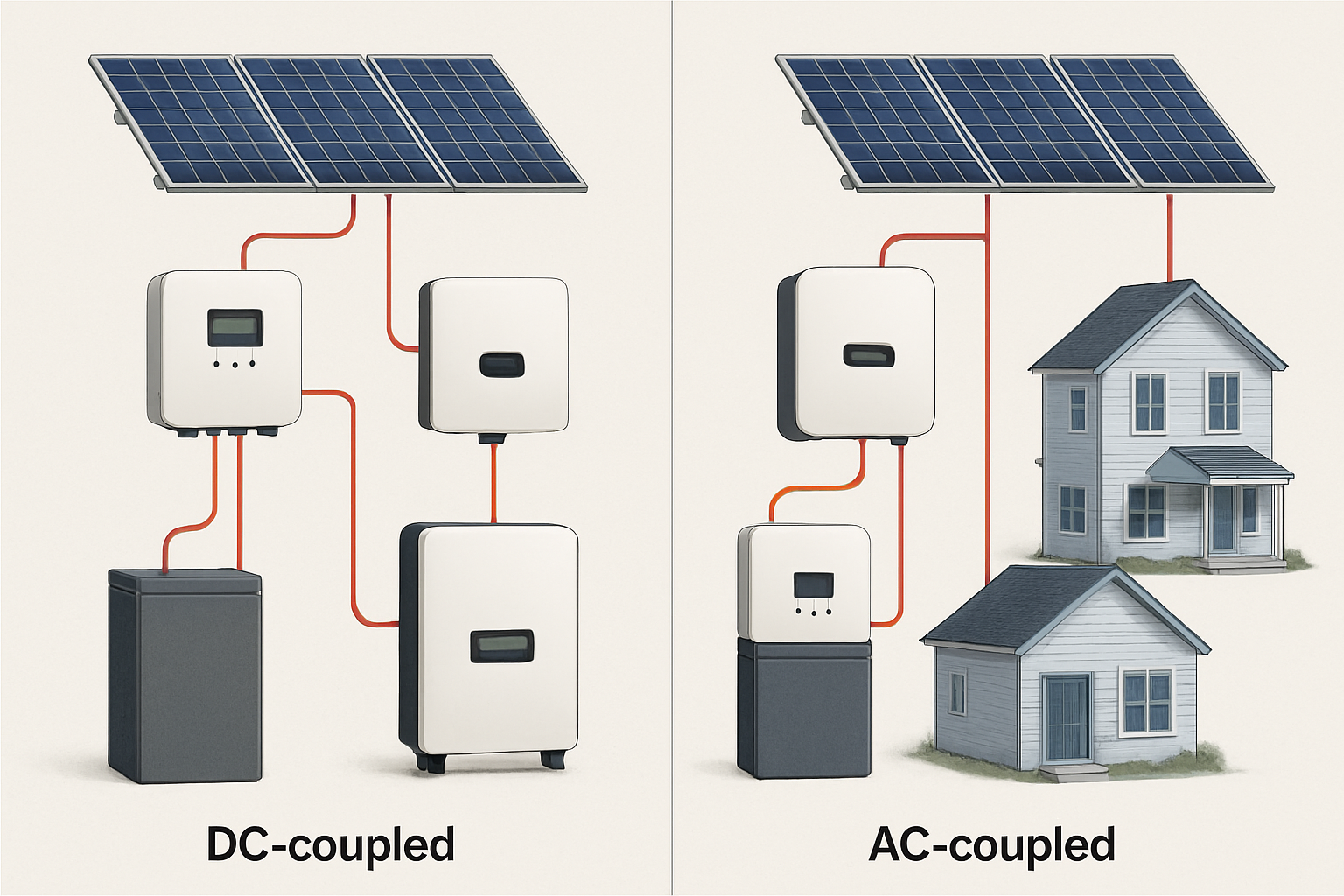Adding a battery to an existing solar panel installation is an effective way to increase energy independence and lower electricity bills. An AC coupled solar battery system is a popular choice for this kind of retrofit. It allows you to store excess solar energy generated during the day for use at night or during power outages. The growth in energy storage is significant; the International Energy Agency (IEA) highlights that to meet global energy targets, a massive expansion of battery storage is necessary. However, a successful outcome depends on avoiding several common pitfalls during planning and installation. An improperly configured system can lead to poor performance, reduced lifespan, and even safety hazards.
Mistake 1: Improper System Sizing
One of the most frequent errors is incorrectly sizing the battery and inverter. This mistake can happen in two ways: under-sizing or oversizing, both with negative consequences.
Underestimating Your Energy Needs
If your battery is too small, it won't be able to store enough energy to power your home through the evening or during an outage. This leads to frustratingly short backup times and continued reliance on the grid. To avoid this, perform a thorough energy audit. Analyze your utility bills to determine your average daily electricity consumption in kilowatt-hours (kWh). Consider which essential appliances you want to run during an outage and calculate their combined power draw.
Oversizing the Battery or Inverter
Conversely, installing a system that is far larger than you need results in a high upfront cost for capacity you will never use. While having extra capacity might seem like a good idea, it can be an inefficient use of capital. The key is to find a balance between your current needs, potential future needs (like an electric vehicle), and your budget. A correctly sized system ensures you have enough power without overspending on redundant capacity.
Mistake 2: Ignoring Inverter and Battery Compatibility
An AC coupled system involves your existing solar inverter and a new, separate battery inverter. These components, along with the battery itself, must work together seamlessly. Compatibility issues are a primary source of solar battery system troubleshooting.
Mismatched Communication Protocols
The battery, its Battery Management System (BMS), and the battery inverter must communicate effectively to manage charging and discharging. If the components use incompatible communication protocols, the system may not operate efficiently, leading to charging errors, premature shutdown, or an inability to access advanced features. Always verify that the battery and inverter are on each other's approved compatibility lists before purchasing.
Voltage and Power Rating Discrepancies
The battery's voltage must match the battery inverter's required input voltage (e.g., a 48V battery for a 48V inverter). Additionally, the battery inverter's power rating should be sufficient to handle both the output from your solar inverter and the demands of your home's loads. A mismatch can strain components and lead to system failure.
Mistake 3: Poor Installation and Location Choices
Where and how you install your battery system is just as important as the components you choose. A poor installation can compromise safety, performance, and the longevity of your investment.
Inadequate Ventilation and Temperature Control
Batteries have an optimal operating temperature range. High temperatures can accelerate degradation and reduce the cycle life of a battery, while extreme cold can temporarily reduce its capacity and efficiency. According to an in-depth analysis on solar storage performance, maintaining a stable temperature is crucial for extending the life of LiFePO4 batteries. Ensure the battery is installed in a location with adequate ventilation, away from direct sunlight and sources of heat. A garage or basement is often suitable, provided it remains within the manufacturer's specified temperature limits.
Incorrect Wiring and Connections
Electrical safety is paramount. Using undersized wires can create a fire hazard, and loose connections can cause voltage drops and poor performance. All wiring must be done according to local electrical codes, using the correct wire gauge, and all connections must be torqued to the manufacturer's specifications. Proper circuit protection, such as fuses and breakers, is also essential to protect your equipment and your home.
Mistake 4: Neglecting Round-Trip Efficiency
Understanding the efficiency of your system helps set realistic expectations for its performance.
What is Round-Trip Efficiency?
Round-trip efficiency is the measure of how much energy you get out of a battery compared to the amount of energy it took to store it. In an AC coupled system, power undergoes multiple conversions: DC from solar panels is converted to AC by the solar inverter; this AC is then converted back to DC by the battery inverter to charge the battery. When the battery discharges, the DC power is converted back to AC again. Each conversion results in small energy losses.
How to Maximize Efficiency
While AC coupling has a slightly lower round-trip efficiency than DC-coupled systems (typically 85-92% for AC vs. up to 95% for DC), you can maximize it by choosing high-quality inverters and batteries with high efficiency ratings. Although the losses are small, they add up over the lifetime of the system, so selecting efficient components is a worthwhile investment.
Mistake 5: Overlooking System Monitoring and Maintenance
Once your system is installed, proper monitoring and basic maintenance are key to ensuring it operates correctly for years to come.
Failing to Set Up Monitoring
Most modern battery systems come with monitoring software that allows you to track energy production, consumption, and the battery's state of charge (SoC). This data is invaluable for understanding your energy habits and for detecting potential issues early. Regularly checking your system's performance can help you spot a problem before it becomes a major failure.
Skipping Regular Maintenance Checks
While modern lithium-based batteries, such as Lithium Iron Phosphate (LiFePO4), are known for being low-maintenance, they are not 'no-maintenance'. Periodically perform a visual inspection of your system. Check that all connections are secure, ensure that ventilation ports are not blocked, and look for any error codes on the inverter display. These simple checks can help ensure your system runs safely and efficiently.
Moving Forward: Key Takeaways for a Successful System
Adding an AC coupled battery to your solar installation is a powerful step toward energy resilience. By avoiding these common mistakes—improper sizing, component incompatibility, poor installation, ignoring efficiency, and neglecting monitoring—you can ensure your system delivers reliable, clean energy for years. Careful planning and attention to detail are the foundations of a high-performing and long-lasting energy storage solution. As noted by the U.S. Department of Energy, well-designed home battery systems are crucial for building a more resilient power grid.
Disclaimer: This information is for educational purposes only. Always consult with a qualified professional for system design and installation. This content does not constitute financial or legal advice.
Frequently Asked Questions
What is an AC coupled battery system?
An AC coupled battery system is a method of adding energy storage to a new or existing grid-tied solar panel system. It works by connecting a battery and a dedicated battery inverter to the AC (alternating current) side of your home's electrical system, separate from the solar inverter.
Can I install an AC coupled system myself?
While some components may seem straightforward, a complete installation involves working with high-voltage electricity and requires a thorough understanding of electrical codes and safety procedures. To ensure safety, compliance, and warranty validity, professional installation by a certified technician is strongly recommended.
How do I know if my existing solar system is compatible with AC coupling?
Nearly all existing grid-tied solar systems are compatible with AC coupling. Because the battery system connects to your home's AC electrical panel, it operates independently of your solar inverter's brand or model. The primary considerations are having adequate physical space and ensuring your electrical panel can accommodate the additional hardware.
What is the typical lifespan of a lithium battery in an AC coupled system?
A high-quality Lithium Iron Phosphate (LiFePO4) battery, when operated under proper conditions, can last for 10 to 15 years or more. These batteries are typically rated for 6,000 or more charge-discharge cycles. The actual lifespan is influenced by factors such as operating temperature, how deeply the battery is discharged (depth of discharge), and the quality of the overall system management.





Leave a comment
All comments are moderated before being published.
This site is protected by hCaptcha and the hCaptcha Privacy Policy and Terms of Service apply.